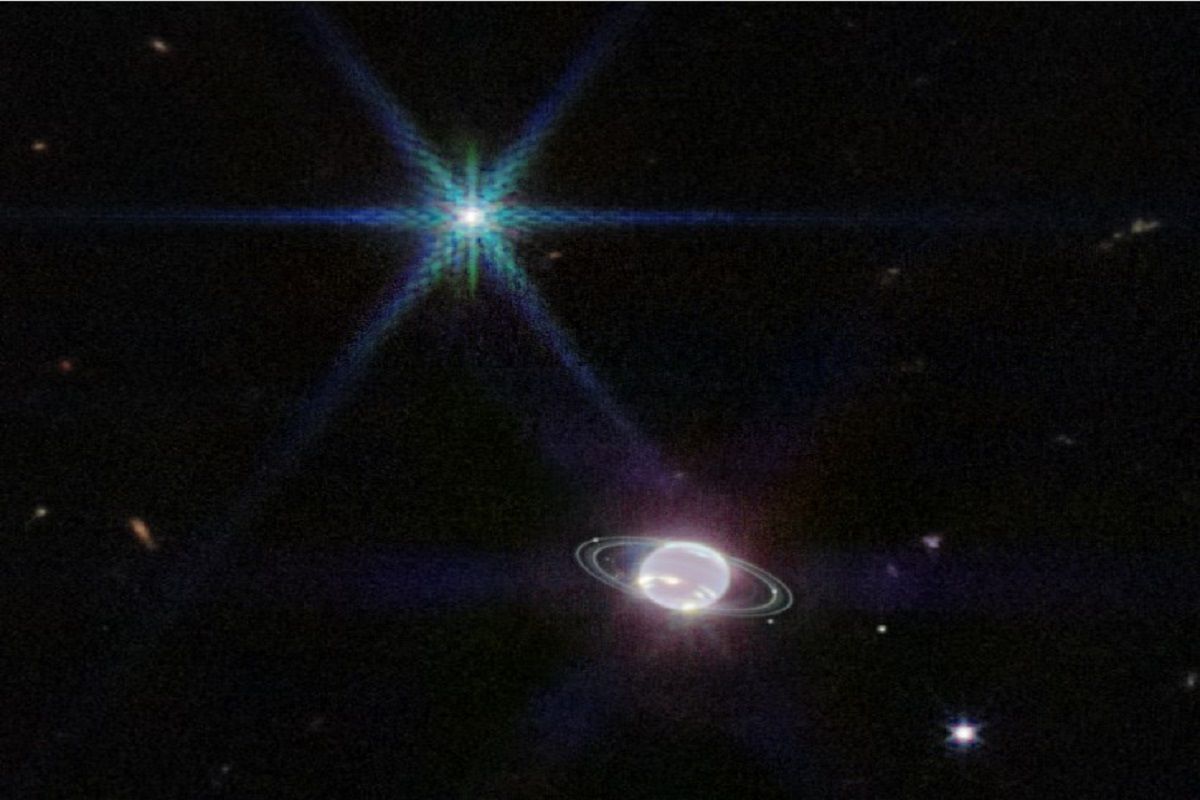

Scientists say this particular galaxy, previously unexplored in detail, is about 1,200 million light years away. Towards the bottom left of this image, a barred spiral galaxy comes into focus. However, Neptune appears relatively small in a wide field of the vast universe. In most portraits, the outer planets of our solar system reflect this otherworldly size. If Earth were the size of a nickel, Neptune would be as big as a basketball. Neptune, when compared to Earth, is a big planet. In this image by Webb's Near-Infrared Camera (NIRCam), a smattering of hundreds of background galaxies, varying in size and shape, appear alongside the Neptune system.

This is because gaseous methane, part of the planet's chemical makeup, doesn't appear blue to Webb's Near-Infrared Camera (NIRCam). In the new images, Neptune looks white, as opposed to the typical blue appearance it has in views captured at visible wavelengths of light. The planet and its neighbor Uranus are known as "ice giants" because their interiors are made up of heavier elements than the gas giants Jupiter and Saturn, which are richer in hydrogen and helium. The operations center for the telescope is in Baltimore, at the Space Telescope Science Institute on the Johns Hopkins campus.ĭark, cold and whipped by supersonic winds, Neptune is the most distant planet in our solar system. Some of the rings haven't been observed since NASA's Voyager 2 got the first photographic proof of the existence of Neptune's rings during its flyby in 1989. In addition to several crisp, narrow rings, the Webb images show Neptune's fainter dust bands. Such methane-ice clouds are prominent as bright streaks and spots, which reflect sunlight before it is absorbed by methane gas. In fact, the methane gas so strongly absorbs red and infrared light that the planet is quite dark at these near-infrared wavelengths, except where high-altitude clouds are present.

Webb's Near-Infrared Camera (NIRCam) images objects in the near-infrared range from 0.6 to 5 microns, so Neptune does not appear blue to Webb. "It has been three decades since we last saw these faint, dusty rings, and this is the first time we've seen them in the infrared," said Heidi Hammel, a Neptune expert and interdisciplinary scientist on the Webb project, in a news release. (CNN) - New images released Wednesday from NASA's James Webb Space Telescope are revealing Neptune, and the planet's hard-to-detect rings, in a fresh light.


 0 kommentar(er)
0 kommentar(er)
